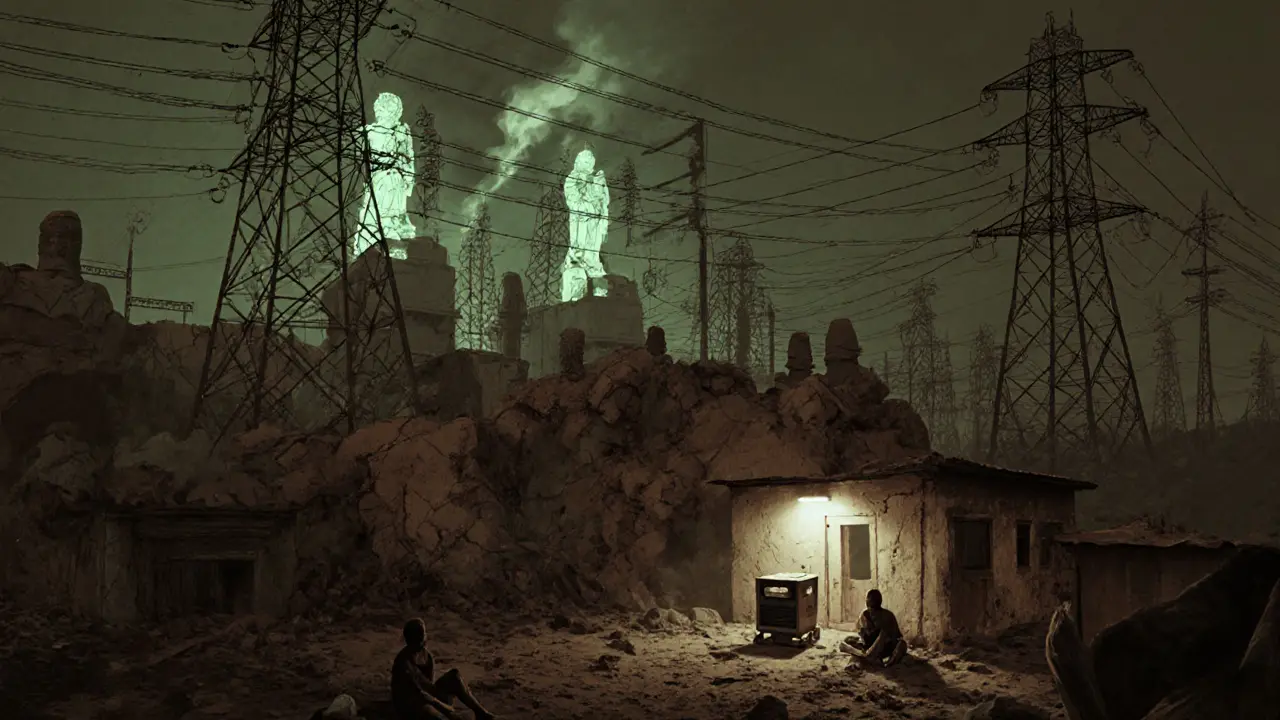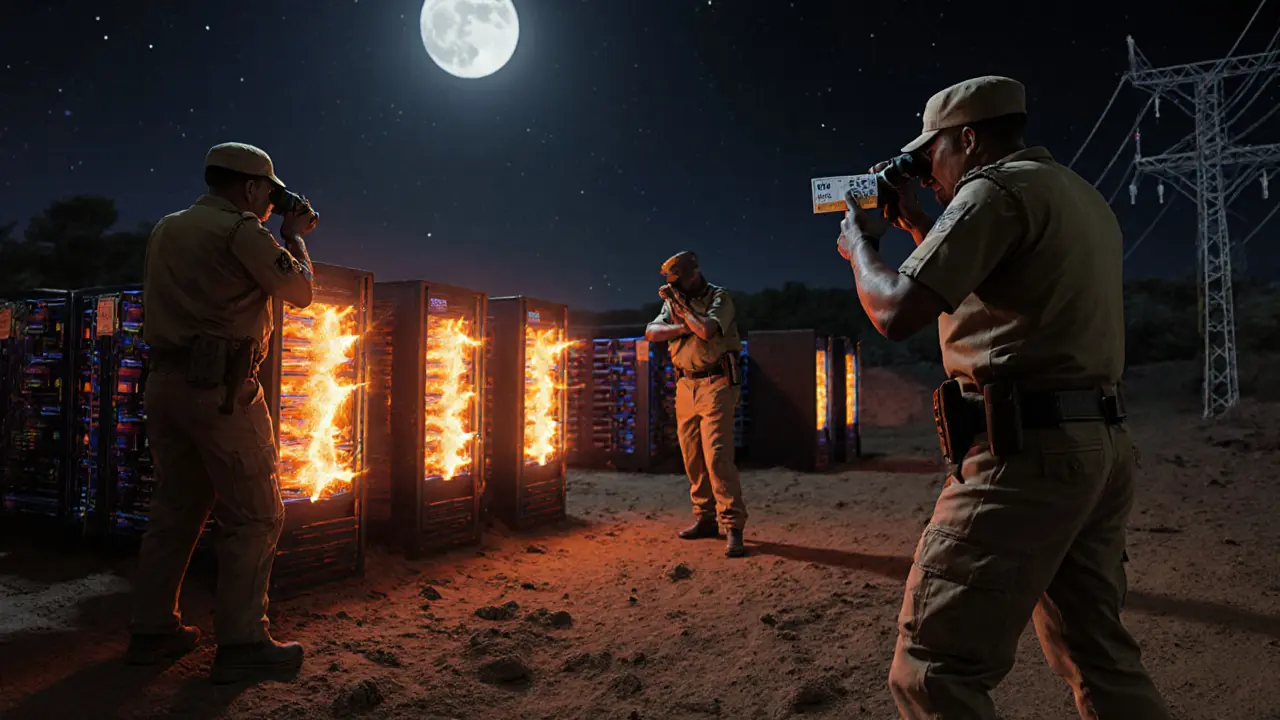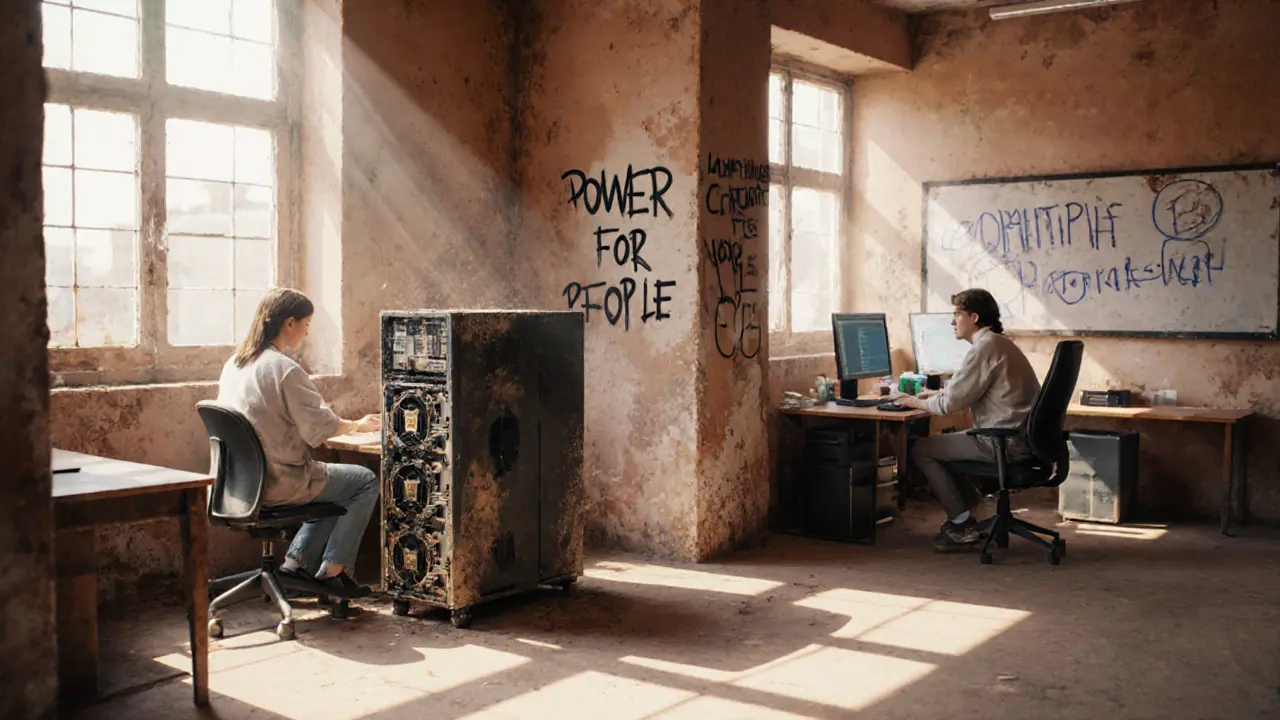Energy Crisis Forces Angola to Ban Crypto Mining
 Jul, 10 2025
Jul, 10 2025
Bitcoin Energy Calculator
Calculate how much electricity Bitcoin mining consumes and compare it to Angola's energy grid situation. One Bitcoin consumes 1,440 kWh of electricity - enough to power 40 bank transactions or 15 homes for a month.
Energy Consumption: 0 kWh
Equivalent to: 0 homes for one month
Angola's grid capacity: 5,500 MW (total capacity)
Mining usage: 0% of total grid capacity
Angola Grid Context: In Angola, 15% of the grid's capacity (800 MW) was used by miners - enough to power 300,000 homes. With only 47% grid reliability, these resources could have powered hospitals, schools, and homes instead.
Angola shut down cryptocurrency mining entirely in April 2024-not because it hates Bitcoin, but because its power grid was collapsing. With 60% of urban households facing daily blackouts and hospitals running on generators, the government made a brutal but simple choice: stop giving away electricity to machines that mine digital coins.
Why Angola Couldn't Afford Crypto Mining
Angola’s national grid can produce about 5,500 megawatts of electricity. That’s barely enough for 39 million people. And for a while, crypto miners were using up to 15% of that power-roughly 800 megawatts. That’s the same amount of electricity needed to run 300,000 homes.Most of this energy went to ASIC miners-specialized hardware that runs nonstop, 24/7. Each unit pulls around 3,200 watts. In one raid in August 2025, authorities seized 8,300 of these machines. Add in 15,000 graphics cards from GPU rigs, and you’ve got a power draw that rivals a small country’s industrial sector.
But here’s the kicker: the miners weren’t even paying for it. Many had hacked into the grid using illegal power stations. These weren’t just stolen meters-they were bypassed safety systems. In Luanda and Benguela, transformers exploded. Hospitals lost power for hours. Local businesses saw electricity prices jump 22% in 2023 because the grid was overloaded.
The Crackdown: Operation Serengeti 2.0
By August 2025, things got serious. Interpol led Operation Serengeti 2.0, a multinational cybercrime sweep involving 18 African nations and the UK. In Angola alone, authorities shut down 25 illegal mining farms. They arrested 60 Chinese nationals-every single person caught was from China. They seized $37.2 million worth of equipment and 45 unauthorized power stations.The operation didn’t rely on guesswork. The National Electricity Agency (INE) used smart meters to spot abnormal 24/7 power usage. Police used thermal cameras to find heat signatures above 45°C-something only mining rigs produce. And the public helped: a whistleblower program offered 5% of seized equipment value as a reward. Seventy-three percent of the raids came from tips.
Miners had been lured by cheap power-$0.03 per kilowatt-hour, less than half the global average. But the cost wasn’t just financial. Equipment failure rates hit 40% because of unstable voltage. Some operators paid $500 a month in bribes just to keep their rigs running.
Energy Use vs. Human Needs
The math was brutal. Mining one Bitcoin in Angola consumed 1,440 kilowatt-hours. That’s 40 times more energy than a single bank transaction. Meanwhile, 15 million Angolans still had no reliable access to electricity. The government’s own report showed the country’s per capita electricity use was just 420 kWh per year-less than 10% of the global average.Dr. Elena Mwamba from the African Development Bank put it plainly: “Angola loses 28% of its generated power through old, broken transmission lines. You don’t waste what you barely have.”
People noticed. On Reddit, a user named u/AngolaTech posted: “I saw our local clinic running on a generator while mining farms used industrial transformers.” The post got over 1,200 upvotes. Community meetings in Sambizanga echoed the same sentiment: mining wasn’t innovation-it was theft.

What Happens to the Seized Equipment?
The government didn’t just destroy the gear. It inventoried every ASIC and GPU using blockchain-based tracking systems provided by Interpol. Machines worth over $10,000 are being auctioned off. But here’s the twist: 100% of the seized equipment is being redirected to public use.Sixty-five percent is going to university computer science departments. The rest is going to municipal e-government offices to digitize records, improve public services, and train local tech talent. It’s not about banning technology-it’s about redirecting it to where it matters.
There’s a catch, though. Forty percent of the raided sites used fake permits. Legal battles over ownership are dragging on for months. That’s slowed down redistribution.
Why Not Let Them Use Solar Instead?
Angola has massive solar potential-2,200 kWh per square meter annually. Some experts argued: why not let miners use off-grid solar? The government said no. Not yet.Energy Minister João Baptista Borges made it clear in September 2025: “Any future mining must be completely off-grid, with zero connection to the national system.” Even then, no licenses have been issued. The priority isn’t green energy experiments-it’s fixing the grid so families, schools, and clinics stop losing power.
There’s a pilot project in the works with Solax Power, but it’s still just a discussion. No permits, no green lights. Until the grid is stable, the ban stays.

What’s Happening in Neighboring Countries?
Angola’s ban didn’t happen in a vacuum. Seven of the 15 countries in the Southern African Development Community have restricted mining since 2022. But Angola’s rules are the strictest.Neighboring Namibia saw a surge. Between April 2024 and August 2025, mining registrations jumped 200% as Angolan operators moved across the border. But Namibia’s electricity costs $0.12 per kWh-four times higher than Angola’s old rate. Profit margins collapsed by 60%.
South Africa took a different route: tax mining. They charge 15% of energy consumption, using the $120 million a year to upgrade the grid. Angola didn’t go that route. They went for zero tolerance.
Will Mining Ever Come Back?
Global crypto mining hash rate dropped sharply after Angola’s ban. The country’s contribution fell from 0.8% to 0.02% of the global total. That’s 1.2 exahashes gone.Will it return? Only if the grid improves. The Cambambe III hydropower project, set to add 1,150 megawatts by 2028, could be a turning point. But even then, experts say Angola won’t reopen mining until grid reliability hits 90%. Right now, it’s at 47%.
The World Bank has pledged $15 million to help Angola build energy allocation frameworks-possibly creating zones for high-priority industries, including mining, near new solar or wind farms. But that’s years away.
For now, Angola’s message is clear: no digital coins are worth a child’s hospital losing power. No algorithm is more important than a family’s lights.
What This Means for the Rest of Africa
Angola isn’t alone in struggling with energy and crypto. Nigeria, Kenya, and Ghana still allow mining-but they’re watching closely. If Angola’s grid stabilizes and its public services improve, others may follow. If it doesn’t, Angola could become a warning: when energy is scarce, you don’t waste it on speculation.The real story here isn’t about Bitcoin or blockchain. It’s about priorities. When your people are in the dark, you don’t power machines that glow in the night.
Why did Angola ban cryptocurrency mining?
Angola banned cryptocurrency mining because its power grid was overwhelmed. Mining operations were using up to 15% of the country’s total electricity-enough to power 300,000 homes-while millions of people faced daily blackouts. The government chose to redirect energy to hospitals, schools, and homes instead of speculative digital asset mining.
Is it illegal to own a crypto miner in Angola?
Yes. Possessing or operating cryptocurrency mining equipment is illegal under Angolan law. The ban, enacted in April 2024, criminalizes not just mining activities but also owning the hardware used for them. Violators face one to five years in prison and mandatory confiscation of all equipment.
How much electricity does crypto mining use in Angola?
Before the ban, mining operations collectively used between 50 and 200 megawatts of electricity-equivalent to the needs of 300,000 households. One Bitcoin mined in Angola consumed 1,440 kilowatt-hours, which is 40 times more energy than a traditional bank transaction.
What happened to the seized mining equipment?
All seized mining equipment is being redistributed to public institutions. Sixty-five percent is going to university computer science departments to support tech education. The remaining 35% is being used by municipal e-government offices to digitize public services. Equipment over $10,000 is auctioned after legal processing.
Could Angola ever allow crypto mining again?
Possibly-but only under strict conditions. The government has said any future mining must use 100% off-grid renewable energy with zero connection to the national grid. Even then, no licenses have been issued. Experts say mining won’t return until grid reliability exceeds 90%, which is unlikely before 2027-2028.
Did other African countries follow Angola’s lead?
Seven out of 15 countries in the Southern African Development Community have imposed some form of mining restriction since 2022. But Angola’s ban is the most severe. Neighboring Namibia saw a 200% increase in mining operations after Angola’s ban, but higher electricity costs made it less profitable. Countries like Nigeria and Kenya still allow mining but regulate exchanges instead.
Angola’s move isn’t about rejecting technology. It’s about survival. When your people are waiting in the dark, you don’t light up machines for profit. The world watches to see if this hard choice leads to lasting change-or if the lights stay off for everyone.
George Kakosouris
November 26, 2025 AT 20:59Let’s be real - this isn’t about energy equity, it’s about geopolitical control. Angola’s grid is a mess, sure, but the real motive? Shutting down Chinese capital infiltration under the guise of ‘public good.’ The 60 Chinese nationals arrested? Coincidence? Hardly. This was a calculated power play - redirecting seized ASICs to universities? That’s not redistribution, that’s state-sponsored tech colonization. The World Bank’s $15M pledge? A Trojan horse for Western tech firms to get a foothold in African infrastructure. They’re not saving hospitals - they’re replacing miners with their own supply chains.
And don’t get me started on the blockchain tracking. That’s not transparency - it’s surveillance infrastructure masquerading as public service. The government’s now got a full inventory of every chip in the country. Next stop: digital identity mandates tied to energy access. Welcome to the algorithmic welfare state, folks.
Meanwhile, Namibia’s getting the dregs while South Africa taxes the hell out of it. Classic asymmetrical regulation. The real crypto miners? They’re not in Angola anymore. They’re in Zambia, Congo, and Chad - where the grid’s even worse and enforcement’s non-existent. Angola didn’t stop mining. It just outsourced the chaos.